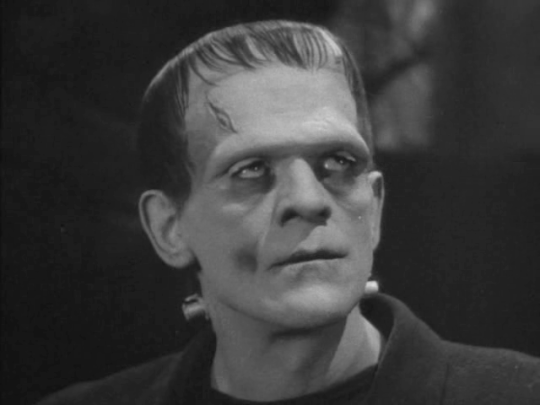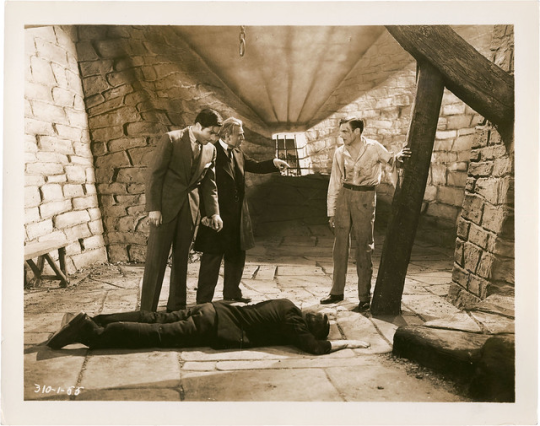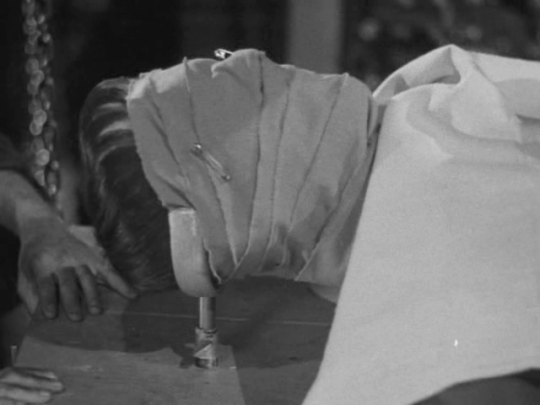Released in 1931, Frankenstein clocks in at the oldest film reviewed on this blog. Eight years before The Wizard of Oz would hit theaters, Frankenstein was released near the dawn of the ‘talkies’, a few short years after 1927’s film The Jazz Singer. Frankenstein came out in a golden age for Hollywood, where filmmaking was being impacted by new inventions, getting bigger and better as more films were made.
All of this is cool, but this isn’t an article about the history of movies. It’s about the times that Frankenstein was born in.
1931 was a tough year. Prohibition was still in force, and at the time, The Empire State Building was the tallest building on Earth. The Great Depression had just started, and with it came a drop in the morale of the entire nation. While sabers weren’t yet rattling quite so loudly in Europe, things weren’t spectacular either. It was the job of the movie business to keep the people’s minds off of it. As a result, many films of the 1930s were full of lighthearted movies about beautiful, rich people having a good time. Movies were loud, carefree, optimistic, stuffed with glamour and glitz. People didn’t want darkness. They wanted light.
All of this may not seem like important information when watching a film made almost ninety years ago in the present day, but in the realm of analyzing film, this stuff is very important. In order to understand Frankenstein, first we have to contextualize it.
Hence this article.

We’ve discussed it a hundred times before: No film is an island. Every movie ever made, every story ever told, is a product of the people who created it, people who are in turn influenced by the culture. Every song, movie, book, TV show or magazine is a product of the times, and shows it, even a ‘timeless’ classic like Frankenstein. No matter how far removed from the culture by location or time, every film we look at carries the signature ideas, designs, acting style, archetypes, stories and special effects of the time of its creation.
The unfortunate result is that the test of time doesn’t always allow films once considered classics to pass without blemish. Some movies age better than others.
So, which is Frankenstein?
It’s actually a really hard question to answer.
Unlike plenty of the other examples we’ve looked at previously, Frankenstein is hard to pin down on a first viewing by way of actual story design. The film is in black and white, sure, and the audio and visual quality speak to earlier cameras and sound-design, but when it comes to actual visual storytelling, it’s very hard to tell when this film actually is from.

Most contemporary movies of the 1930s looked like films of the 1930s. People dress or talk like the decade a film was made in, that’s to be expected. Some films, like Gone With the Wind, worked very hard to make sure that the film looked like the time period it was set in, but Frankenstein, while not being the 1930s, isn’t really any other time, either.
The film’s setting is a classic example of Anachronism Stew. Electricity brings the creature to life, but there’s public hangings. The university that Fritz steals the brain from seems contemporary to 1931, but there are no phones, no trains, no cars, and no guns. (The mob chases the monster down with pitchforks and torches, remember?) The people of the town that Frankenstein is from seem to be living several decades previous to when the film is actually set.
Equally odd is the fact that there’s no idea when this is set. Of course, the characters speak English, and several of the actors hail from England, but the existence of a Burgomaster seems to indicate Germany. There is nothing in dialogue or geography that pinpoints where or when this film is set.
As such, this removes one of the classic arguments for films being outdated: the simple evidence of the time a film is made in.
Unfortunately, the term ‘dated’ is often applied with a negative connotation to films that are discernibly set in a certain time, viewed as less enjoyable to any viewers who aren’t currently in the culture that created it. This word is used for a film that isn’t considered to have ‘aged well’, and the criteria for such a judgement could be anything from hairstyles to slang of the era.

In terms of this test, no, Frankenstein is not dated, not in the slightest. But that’s not really the criteria we use here.
The question of whether or not a film is ‘dated’ has little to do with the fact that people look and sound like they are in the decade that they are in. Rather, it has more to do with the idea that the film’s ideas and worldviews have aged poorly, how certain issues or character types are viewed or utilized is what truly dates a film, more than any outdated slang term or hairstyle.
With that in mind, again, I ask the question: Is Frankenstein dated?
Honestly? Not really.
Obviously, as I mentioned before, the look and sound of the film from a technical standpoint puts the film firmly, and obviously, in the 1930s, and some might argue that the staging of certain shots, filmed as set stages as in a play, point to early tactics of film-makers. While all of that is true, it doesn’t change the fact that the core story, the story of Frankenstein, is never going to be dated.

The thing is, Mary Shelley’s Frankenstein novel was already over a hundred years old when this film was made. The original story, the kernels of plot that are inherent to each version of the Frankenstein tale, is immortal. And that translates pretty well to the film.
Like I’ve said previously, Frankenstein is clearly a movie from the 1930s. It comes across as an old movie, which makes sense, because it is. Ninety years have passed since this film first came to life, and it makes sense that some things have changed. More modern interpretations of Frankenstein would probably give Elizabeth a bigger role, for example. But as I’ve said, there’s a difference between being deeply rooted in changing ideas, and simply showing its age.
Frankenstein is the latter.
Frankenstein is one of the original monster films, one of the grandfathers of the modern horror film, and that actually adds to its timeless nature. We’ve seen these scenes hundreds of times, in different films or other mediums. Even if you’ve never seen the film, if you sit down in front of Frankenstein, you instantly recognize these characters, the setpieces, even specific scenes, because they’ve been done so many times since. Even still, it saps none of the original electricity (ha!) of the original sequences. It doesn’t matter if you’ve seen a hundred parodies of Frankenstein raising his creation from the dead, the scene from the 1931 film still possesses an incredible spark that, honestly, most of the film has.
There is nothing in this film that points to an ‘outdated’ sensibility, because the ideas that it presents are still wrestled with to this day. The ideas that Mary Shelley first wrote about in 1818 are still in use in science-fiction to this day, the fateful idea of man’s destruction at the hands of our own creations, or of humanities inability to accept limits, or of the socialized fear of what is ‘Other’.

Frankenstein is a tragic, spooky, intriguing and compelling story that has remained steadfast this long because people still get into this story, and these characters. In my opinion, a movie is timeless not based on whether or not you can tell what decade it was made in, but by how well it has endured, on how well people can enjoy it long after the culture has changed. With that criteria in mind, Frankenstein holds up extremely well.
Frankenstein has lasted this long because people will be always able to understand it, enjoy it, and relate to the characters and themes, from the scares to the legitimately thought-provoking moments. And that’s the reason that Frankenstein, specifically this version, will continue to endure: it was the first (in sound), the simplest, and the most poignant in every way, and in that, it remains fresh and exciting, in its stark, open way. And it shows, to the point where the cultural understanding of Frankenstein is rooted almost entirely in this film, and the movies that came after paying their own homage to James Whale’s film.
Ninety years since its release, Frankenstein, the monster, and the message of this film, remains totally unchanged from what they originally were, no matter how many times this story is resurrected. And it will continue to be so, for another ninety years to come.
Thanks so much for reading! Don’t forget to use that ask box if you have your own ideas or thoughts that you’d like to share. Join us next week when we’ll be looking at the visual and audio storytelling of Frankenstein. I hope to see you there!
One thought on “Frankenstein: A Product of the Times”